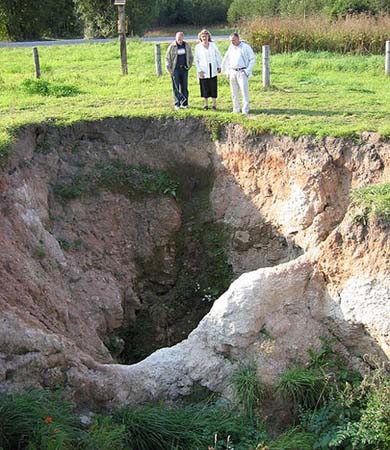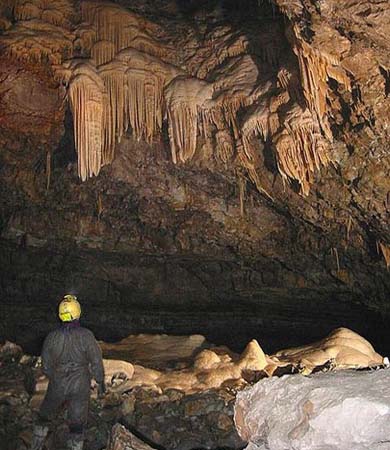Karst Topography
What do you think happens when the underlying limestone rocks of an area are fractured and dissolved away by acidic water percolating through them? Two of the most prominent consequences are shown in the images. Roll over each image with your mouse to see the name of each one. Think about how these features developed.


Karst topography is a kind of land that forms when slightly acidic water dissolves rocks that have carbonate minerals in them. Most often, this rock is limestone. As precipitation and runoff water moves through the environment, it picks up carbon dioxide from the atmosphere. This makes the water slightly acidic with carbonic acid. The slightly acidic water then reacts with limestone. It wears down the limestone and puts cracks in it. The limestone then dissolves away. This is an example of dissolution weathering.

Karst topography is only found over about 8% of Earth’s land. What conditions must be met for karst topography to develop? Why doesn’t it occur more often?
The development of karst topography requires water and soft rocks, which are most often limestone, but can also be dolomite, chalk, marble, or gypsum. The environment must be one in which there is enough precipitation and runoff to dissolve the rocks. It must also be an environment that is underlain by rocks that easily dissolve. If it is underlain by granite or sandstone, which are much harder to dissolve, you will not get the same karst development.

Karst environments rarely have large bodies of surface water over them. Why do you think this is? What happens to precipitation and runoff water in karst environments?
Much of the water moves underground, easily soaking into cracks and worn-down areas of the underlying limestone.
© KC Distance Learning. All rights reserved.

